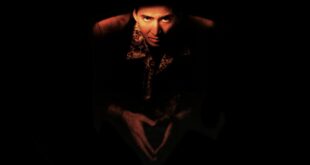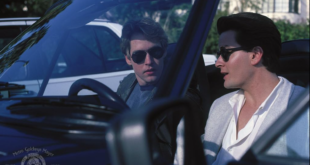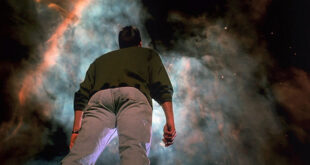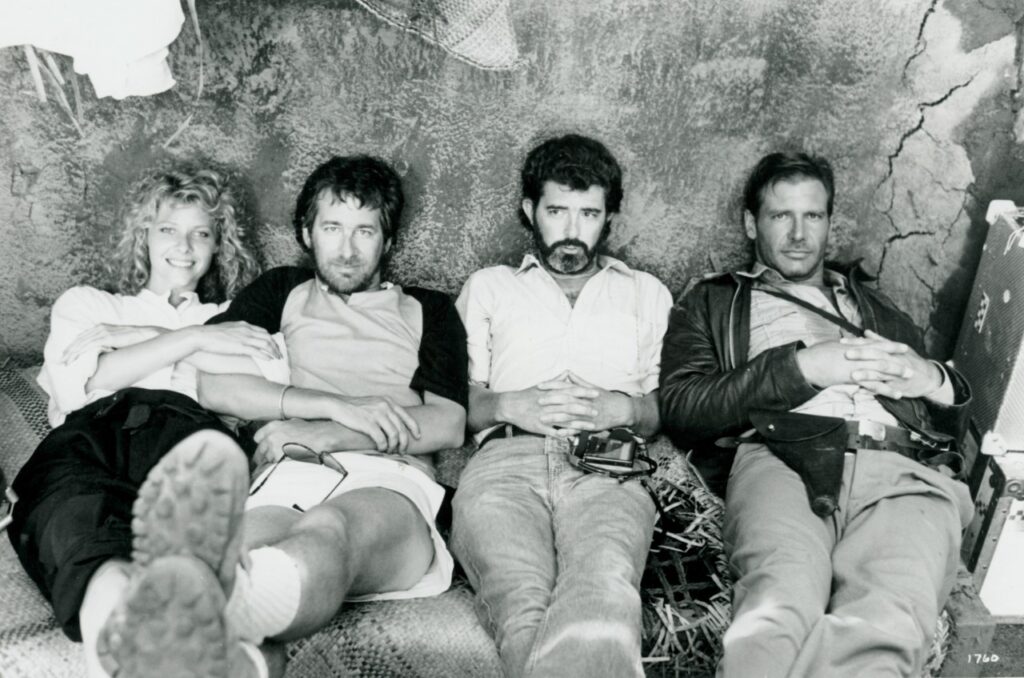“I wasn’t happy with Temple of Doom at all. It was too dark, too subterranean, and much too horrific. I thought it out-poltered Poltergeist. There’s not an ounce of my own personal feeling in Temple of Doom. The danger in making a sequel is that you can never satisfy everyone.” – Steven Spielberg
Screw subtlety (Spielberg and Lucas did here). Allow me to say that I love Indiana Jones and the Temple of Doom, and it’s my favorite Indiana Jones picture. That’s a hot take out of the gate, but it’s true. It wasn’t always that way, I admit. Like most Indy fans, my favorites were Raiders of the Lost Ark and Last Crusade, then we mention Temple of Doom (we don’t ever mention Kingdom of the Crystal Skull). Temple of Doom, released in 1984, is often the most controversial among movie and Indy fans. Your opinion on it has much to say about you, quite frankly, and I love every second of this preposterous, scary, funny, sexy, disturbing, risky, and cheeky film. It’s my favorite Indiana Jones film and one I watch constantly now. I enjoy that it’s not a retread like The Last Crusade and I enjoy how amazingly bonnkers and entertaining it is.
The number one thing that leaps out at you about Temple of Doom is how different and very much its own thing it is from Raiders of the Lost Ark. For the Indiana Jones films, George Lucas and Steven Spielberg drew inspiration from matinee serials growing up from Republic Picture serials to the Doc Savage series. Movie-wise, they were inspired by films like Stagecoach, Gunga Din, Casablanca, The Naked Jungle, Lawrence of Arabia, not to mention James Bond. Raiders of the Lost Ark is more emblematic of the entertaining globe-trotting nature of these movies. Temple of Doom is dark under the belly.
“I think Temple of Doom was ahead of it’s time for my own sensibilities and exactly right on schedule for George’s. George was going through a dark period.” – Steven Spielberg
Lucas felt the second film had to be darker than the first like The Empire Strikes Back was to A New Hope. To repeat not having to use the Nazis as villains (something they would do again in The Last Crusade, which was meant to sort of get back that Raiders of the Lost Ark feel), Lucas came up with the idea of making Temple of Doom a prequel, set a few years before Raiders of the Lost Ark. This decision had a profound impact on the kind of Indiana Jones character we see on the screen in Temple of Doom. He’s noticeably different from Raiders, right from the Bondian opening scene set in Shanghai (an excellent scene that establishes the film’s breakneck pace), and is in the game of archeology for “fortune and glory.” He’s a standard white colonialist archaeologist solely in the game for money and more of a bachelor extraordinaire.
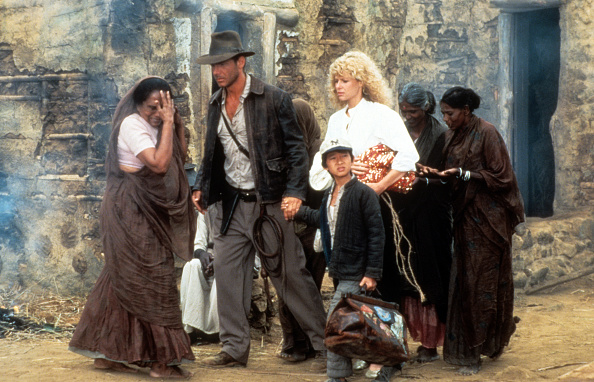
The dark nature of Temple of Doom has been attributed to George Lucas’s disgruntled nature at the time, having gone through a nasty divorce. Indeed, even Spielberg was going through a breakup at the time. It’s impossible not to mention this and not see how it seeped into the work of the auteurs during Temple of Doom. This might also explain why they crossed the threshold of darkness they initially intended to go and make no mistake, this movie, while preposterous and silly, is also very dark. There’s child slavery in it, for fuck sake. It also features black magic and ritual human sacrifice. You’ll also notice more brutality and mean-spiritedness (though I think this is slightly overstated). It’s fascinating how this directly results from two pissed-off talented filmmakers. Some comedic pratfalls Willie faces could be interpreted as them getting their woman’s anger out. Temple of Doom is meant to emulate the stages of a breakup, and the bitterness and disorientation in the film sometimes imitate that. However, there is light at the end of the tunnel. It should also be noted that Spielberg and Kate Capshaw began a relationship while making this film that’s lasted. I don’t think Lucas and Spielberg are misogynistic or racist, though; another accusation was made in Temple of Doom.

Temple of Doom is not the most accurate portrayal of Indian or Hindu culture. I don’t think the intention was ever to do that. The film drew inspiration from old Hollywood cinema like Gunga Din, featuring the Thuggee (a real cult of thieves). That film portrayed Indian culture negatively and had white actors in makeup. The point is, though, they serve as the villains in the story. So it almost doesn’t matter who the villain is. They’re going to be portrayed as horrific and demented. The Thuggee ritual scenes, which involve ripping the heart out of the victim, can also be attributed to how Lucas was feeling at the time like he had his heart ripped out dealing with divorce. The Thuggee in the film is not meant to represent Hindus accurately. That’s obvious in the comically grotesque but fantastic dinner sequence at the palace, which is intended to set up the fact that something is not correct. Clearly and obviously. You don’t need to sift through monkey brains for that. It’s a silly sequence meant to illustrate Spielberg’s playfulness.
There are many quality things about the Temple of Doom. Yes, it’s ridiculous. Yes, action sequences like the escape from the plane in the beginning on an inflatable raft stretch credibility even for an adventure Hollywood film. Still, there’s also an honest attempt to give Indiana Jones an actual character arc of a hero’s journey. The most sympathetic Indy becomes is taking care of his sidekick Short Round, an excellent introduction played by a young Ke Huy Quan in an excellent performance. Interestingly enough, almost forty years later, he will win an Academy Award for Best Supporting Actor for Everything Everywhere All At Once.
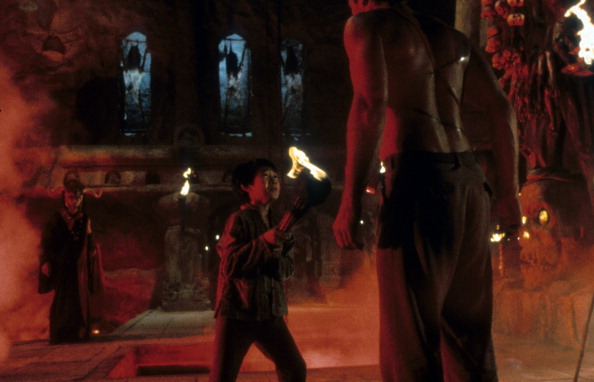
In Temple of Doom, Jones is not quite the academic morality center to René Belloq’s fortune-seeking Nazi collaborating archeologist. He clarifies to Short Round that he’s here for fortune and glory in the beginning. This sharply juxtaposes his views in Raiders of the Lost Ark. Indy’s journey in Temple of Doom is essential to understanding the Jones character. He arrives at a poor village through happenstance, and in the end, he does not wish to profit off of poor people and returns the stone to the rightful owner. Indy returns the Shankara Stones to their rightful owner. In the end, he says that he understands their power now. Jones now finally understands the moral obligation of archaeology.
P.S. – Yes, Willie, played by Kate Capshaw, is annoying…SHE’S SUPPOSED TO BE! Overall, I found her performance good, especially the sexual dialogue between her and Jones in the palace.
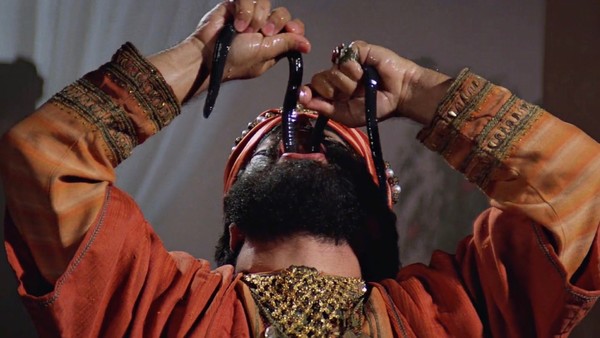
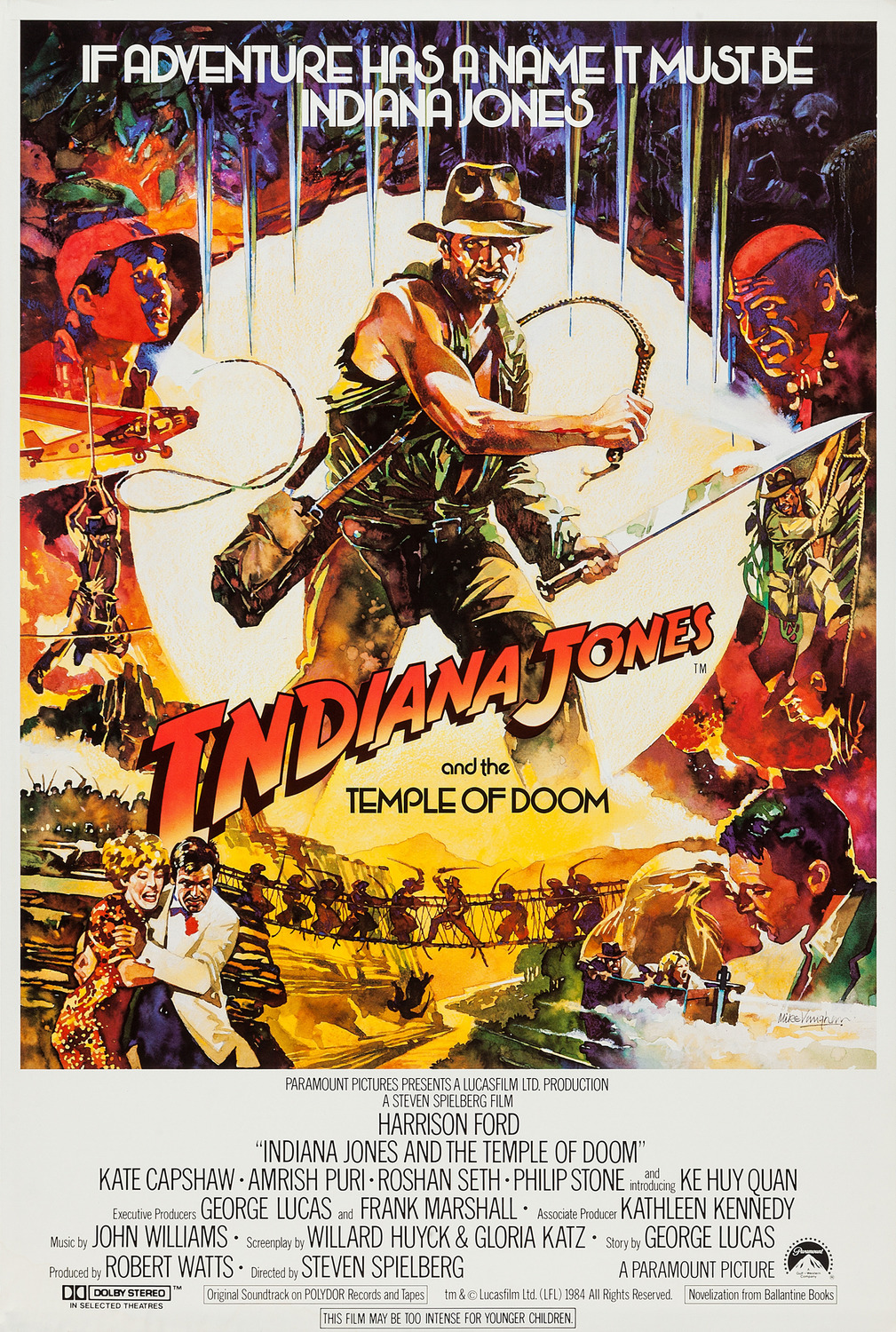
 Movie Finatics The Place for Movie Lovers
Movie Finatics The Place for Movie Lovers

